RetroLisa
------ |
1980s Music Videos | |
|
___________________________________________________________________________________________________________
|
|
|
RetroLisa
| ___________________________________________________________________ | __ | _____________________________ | _______ | Music Video History
music videos as promotional tools
Music videos (as we know them) were first used by pop musicians in the 1960s to promote themselves and their albums. They weren't the creative masterpieces we see today....typical videos simply placed the musicians on a nicely decorated set and had them lip-synch to their latest hits. Throughout the 1960s and 1970s, these video clips were used by record companies to advertise their artists, and were often shown on TV when a band wasn't able to appear on a particular show in person. Musicians in Europe and the U.K. used them quite frequently, since it was far easier to gain exposure in America by sending over a video clip than it was to send over an entire band. Videos weren't intended to be entertainment in and of themselves, they were simply promotional tools.
Of course, the madcap videos produced for The Monkees TV show were an exception to this. They were certainly years ahead of their time!
1975-1981
Everything changed in 1975 with the release of Queen's "Bohemian Rhapsody." The song's elaborate video caused a sensation when it was shown on TV. People wanted to see more, which caused the music industry to see videos in a whole new light. Videos could now be viewed as entertainment rather than just promotional tools. They became more creative by telling stories and using special effects.
In America, music videos were slow to catch on, but they became very popular in Europe and Australia, where they were called pop clips. Artists who experimented with music videos during this time included ABBA, Michael Jackson, Rod Stewart, Devo, Todd Rundgren, David Bowie, Blondie and ex-Monkee Mike Nesmith, who produced the groundbreaking Elephant Parts in 1981.

Elephant Parts
| |

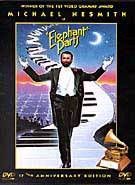
|
_________________________________________________
|
|
|
RetroLisa
| ___________________________________________________________________ | __ | _____________________________ | _______ | The Birth Of MTV
Music videos were still uncharted territory in 1981, when Music Television went on the air. Most cable markets didn't carry the channel, and there were less than 200 videos to choose from. Still, it was an idea whose time had come.
MTV originally functioned like a radio station, with videos instead of records. Music videos were shown 24 hours a day and were introduced by VJs in much the same way that a DJ would introduce a song. Here is how it all started....
1979
The Warner AMEX Satellite Entertainment Company (WASEC) was formed in 1979 when American Express purchased one-half of Warner Cable. The new company was responsible for developing cable channels for satellite distribution. After launching the Movie Channel and Nickelodeon, they focused their attention on developing a third channel.
During this time, Mike Nesmith was producing promotional clips for his own songs. He saw a bright future for the new medium, but realized that America really had no forum for airing music videos. In 1978, he produced a 30-minute music video show called Pop Clips and tried unsuccessfully to sell it to the major networks. Jack Holtzman, an executive at Warner Records, suggested that he pay a visit to John Lack at WASEC.
The theme of WASEC's third channel was still undecided, but Lack liked the idea of music video programming. He asked Nesmith to produce another pilot episode, and if the idea worked, he would air the series on Nickelodeon for the time being. The new Pop Clips pilot was a success, and in March 1980 the series debuted on Nickelodeon.
1980
In 1980, it was announced that WASEC's third channel would showcase music videos. A staff was hired and a vision for the new channel was created. Unfortunately, it was a vision that Mike Nesmith did not share, and he decided to opt out. In January 1981, the idea was presented to the chief executives of Warner Cable and American Express. Their reluctant approval set the project in motion.
1981
WASEC set a target date of August 1, 1981. There was much to do in the next six months!
A new uplink facility on Long Island would be the point of origin for the transmission. Programming would consist of mainstream album-oriented rock and new wave, with seamless content preferred over separate shows.

After considering both TV-1 and TV-M, the name MTV was chosen. The Manhattan Design studio created the familiar big M logo, which is still in use today. The name and the logo reflected the channel's rule-breaking "in your face" attitude, which was essential to becoming a part of youth culture.
Not everything went smoothly. Selling the service to cable providers and advertisers proved to be very difficult. Persuading the major record labels to provide free videos wasn't very easy, either. In order to keep costs down, free public-domain footage would be used for promos whenever possible. Obtaining the videos, cleaning them up, converting them to stereo and adding credits to each tape was time-consuming.

On-air personalities would be needed to introduce the videos and conduct interviews. Over 1,500 people applied, and auditions were held in New York, Chicago, Los Angeles and San Francisco. Five video jockeys were hired: J.J. Jackson, Mark Goodman, Meg Griffin, Nina Blackwood and Alan Hunter.
The decision was made to tape the VJ segments ahead of time. A studio was chosen and a set was constructed. The set design featured wooden beams and exposed brick, both of which were inspired by Saturday Night Live's "trendy New York loft" set.
As the starting date approached, the pace became frantic. Ten record labels had agreed to provide free videos. The VJs were busy taping both their regular segments and band interviews. Cable systems and advertisers were slowly being lined up. Quirky, cutting-edge promos were being produced, including an introductory clip using footage from the Apollo 11 moon landing.
Suddenly, crisis! With less than two weeks to go, Meg Griffin, one of the VJs, backed out. In a panic, WASEC agreed to audition a last-minute applicant, who turned out to be terrific. Martha Quinn was hired as the fifth VJ.
| |

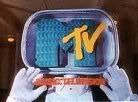


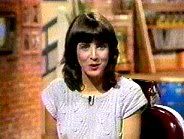
Martha Quinn
|
_________________________________________________
|
|
|
RetroLisa
| ___________________________________________________________________ | __ | _____________________________ | _______ | MTV On The Air
August 1, 1981
Just after midnight, MTV viewers saw a clip of a rocket lifting off. This was followed by clips of the lunar module landing on the moon and Neil Armstrong planting an MTV flag on the surface. As the music kicked in, a voice (John Lack's) announced, "Ladies and gentlemen....rock and roll."
MTV had 13 advertisers and was being shown in only 800,000 homes. On that first night, the VJ clips were shown in the wrong order, some of the promos had no sound, and there was dead air when technicians switched from one tape machine to the other. But it was on.
The first video shown was "Video Killed The Radio Star" by the Buggles. During the first hour, MTV aired videos by Pat Benatar, Rod Stewart, the Who, the Pretenders and Styx.
Official MTV Website
Martha Quinn
Thoughts On MTV
List Of MTV VJs
The First Videos Aired On MTV
Evolution Of MTV & MuchMusic

MTV Launch 1981
MTV Promos
MTV timeline
1981
- MTV broadcasts its first concert: REO Speedwagon
- MTV's first contest: Win A One-Night Stand With Journey
- MTV's second contest: Win A Night With The Rolling Stones
- The first New Years Eve Rock & Roll Ball
1982
- MTV House Party: the winner received a dream party and stereo equipment
- The "I Want My MTV!" advertising campaign is launched
- MTV celebrates its first anniversary by televising a Go Go's concert
- MTV finally airs in Los Angeles and Manhattan
1983
- After being criticized for not showing videos by black artists, MTV premieres Michael Jackson's "Beat It" and "Billie Jean" videos
1984
- Dan Aykroyd and Bette Midler host the first MTV Video Music Awards
1985
- The dance show Club MTV goes on the air
1986
- The first broadcast from Florida during Spring Break
- "Downtown" Julie Brown is the first new VJ in five years
- J.J. Jackson and Nina Blackwood are the first of the original VJs to leave
1987
- Headbanger's Ball is first broadcast
- MTV Europe debuts
- The Week In Rock and the game show Remote Control air for the first time
1988
1989
- Cindy Crawford hosts the first House Of Style
| |

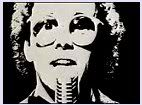

"When we went on the air, we had 168 clips. And 30 of them were Rod Stewart."
--Tom Freston, MTV chairman
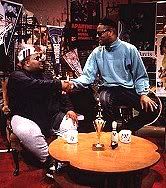
Yo! MTV Raps
|
_________________________________________________
|
|
|
RetroLisa
| ____________________________________________________________ | __ | __________________________________ | _______ | Other Video Shows
MTV wasn't the first outlet for music videos on television, but it was certainly the most popular. They took an untested art form and made it legitimate. Other video shows and channels included:
- America's Top Ten (syndicated, 1980-1992)
- Friday Night Videos (NBC, 1983-2000)
- Night Tracks (TBS Superstation, 1983-1992)
- Video Hits One (VH-1) (1985, for viewers aged 25-54)
- New York Hot Tracks (ABC, 1983-1989)
- Night Flight (USA Network, 1981-1988)
- Video Jukebox (HBO, 1981-1986)
- Radio 1990 (USA Network, 1983-1986)
- ABC Rocks (ABC, 1984-1985)
- MuchMusic (Canada cable, 1984)
- Vusic 21 (Las Vegas, 1984-1987)
- Radio With Pictures (New Zealand, 1976-1986)
- Pop Clips (Nickelodeon, 1980-1981)
- Video Concert Hall (USA Network, 1979-1981)
- Countdown (Australia, 1974-1987)
- The Nashville Network (TNN) (1983-2000)
- Country Music Television (CMT) (1983)
- MV3 (Music Video 3) (syndicated, 1982-1984)
- Rage (Australia, 1987)
| |
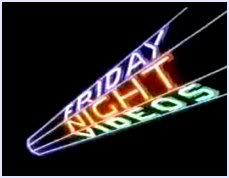
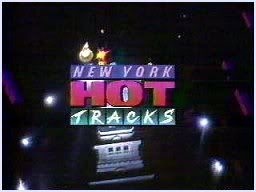
|
_________________________________________________
|
|
|
RetroLisa
| _________________________________________________________________ | __ | _______________________________ | _______ | Video Trends & Multimedia
Music videos created a new kind of star, and suddenly how a musician looked became just as important as the quality of their music. Image was everything. With their stylish videos and trendy appearance, musicians like Madonna and Duran Duran took full advantage of this.
Music videos had a huge influence on pop culture in the 1980s. Clothing and hairstyles became colorful and fun, just like the videos themselves. On TV, commercials and shows like Miami Vice began to resemble music videos. In fact, when Miami Vice was first pitched to TV executives, its working title was MTV Cops.
my playlists
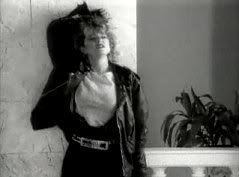
Music Videos 1980-1984
Music Videos 1985-1989
links & screenshots
Fight For Your Right (To Party)
Sledgehammer
Music Video Database
MTV Video Music Awards
top 25 videos of the 1980s
...as determined by MTV and TV Guide
1. Thriller (Michael Jackson, 1983)
2. Sledgehammer (Peter Gabriel, 1985)
3. Walk This Way (Run DMC & Aerosmith, 1986)
4. Sweet Child O' Mine (Guns 'n Roses, 1988)
5. Addicted To Love (Robert Palmer, 1986)
6. Express Yourself (Madonna, 1989)
7. Hungry Like The Wolf (Duran Duran, 1983)
8. Beat It (Michael Jackson, 1983)
9. Take On Me (A-Ha, 1985)
10. Every Breath You Take (The Police, 1983)
11. Need You Tonight (INXS, 1988)
12. You Might Think (The Cars, 1984)
13. Welcome To The Jungle (Guns 'n Roses, 1988)
14. Rockit (Herbie Hancock, 1983)
15. Money For Nothing (Dire Straits, 1985)
16. Sweet Dreams (Eurythmics, 1983)
17. Jump (Van Halen, 1984)
18. Billie Jean (Michael Jackson, 1983)
19. Girls Just Want To Have Fun (Cyndi Lauper, 1984)
20. Wanted Dead Or Alive (Bon Jovi, 1986)
21. Gimme All Your Lovin' (ZZ Top, 1983)
22. Rhythm Nation (Janet Jackson, 1989)
23. Once In A Lifetime (Talking Heads, 1981)
24. Straight Up (Paula Abdul, 1989)
25. Lucky Star (Madonna, 1984)
on to the future....
The 1980s came to an end, and so did the classic era of music videos. In the 1990s, Night Tracks was gone and Friday Night Videos was showcasing live performances and sketch comedy. Even MTV began to devote most of its time to shows like The Real World and Beavis & Butt-Head.
Music videos helped to revive a sluggish music industry, and in the process they made the 1980s a very exciting time for music fans.
| |
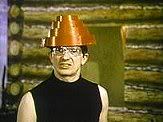
Devo: Whip It
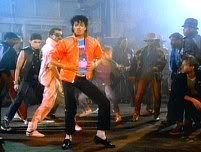
Michael Jackson: Beat It
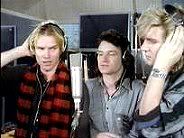
Band Aid: Do They Know It's Christmas?

Culture Club: Karma Chameleon
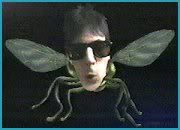
The Cars: You Might Think
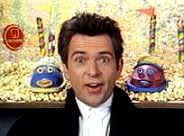
Peter Gabriel: Sledgehammer
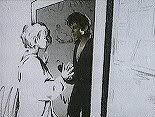
A-Ha: Take On Me
|
_________________________________________________
|
|
|
